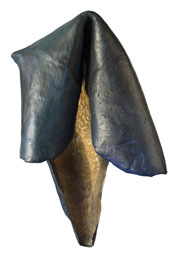White Schooldays
Isme Bennie
I grew up in a town called Vereeniging, meaning, ‘union’ – the place where, in 1910, four provinces signed an agreement to join together to become South Africa. Vereeniging is situated on the Vaal, or dirty river, and the town’s emblem is a bridge of hands over the river. In the town itself, two-foot bridges, one for whites and one for blacks, crosses the railway tracks, on our way as we kids made to the river. The river is a place for Sunday picnics and a big family braai or barbecue on Christmas Day; for drinks or a swim at the Riviera Hotel when we were older; for waterskiing, or golf at the Country Club; for looking at guys, and for necking after a school dance.
The school I attended was General Smuts High, named after a famous South African politician, just as the primary school I attended before that, Selborne School, was named after a British politician. Kindergarten was overseen by Mrs. Salter’s and held at the Sons of England Hall (SOE); and much later, it was at the SOE Hall that I went for tap and ballet classes, ballroom lessons, and school dances. I remember dancing around at kindergarten and hearing Mrs. Salter say to Mrs. Sinclair, our other teacher, that I was a vain little thing.
I went to Hebrew classes at the synagogue, to art classes at the Technical School, to flower arranging classes at one or another of my friends’ houses, and to the public library almost every afternoon. We got around by bicycle, riding around the compact, neat town, streets one way, avenues the other, a ring of industries and a coal mine or two containing it all. After the Second World War, Vereeniging suddenly sprouted suburbs – unending areas of bungalows on half-acre lots, each with a child’s swing in the garden and a water sprinkler endlessly moving backwards and forwards over a struggling lawn.
My father’s family arrived in the area shortly after ‘the union’, without any idea that the corner property they owned would end up being in the heart of a busy industrial centre, that their lumber and hardware business would become the Saturday-market-day focus for farmers from miles around and, the place where the black pastor of a nearby township or “location” would come to with the collection plate for tickeys (three penny bits) and sixpences towards sealing a good deal on a new church roof.
General Smuts High, where we were taught in English, and the Afrikaans Medium High, with whom we competed regularly in sport, were the two main schools in the area. They were academic, rather than technical schools, but domestic science was one of the compulsory courses for girls, at least for the first three years of high school, After that one could drop it, as I did, and as most of us did who planned to go on to University.
For all three compulsory years of DomSci, as we called it, my partner in cooking ventures was a girl named Shala. We cycled to school together each day, and home again, at lunch we swapped our maid Sarah’s egg sandwiches for their maid Mary’s chicken sandwiches, spoke on the phone for hours, collaborated on homework, and fancied two boys, themselves best friends as well as school prefects, from whom we were delighted to be given ‘lines’ when we transgressed. Today, I still know “The quality of mercy is not strained….”
As a cooking duo, Shala and I never attained great culinary skills, but we did manage – no matter how closely we followed the recipe – to end up with more of anything than anyone else.
Sometimes the boys in our class, who studied woodwork while we were busy improving our homemaking skills, would come in after their lesson and eat our pies and cakes and stews. When they did not we had to eat them ourselves. It was a course seemingly evolved out of England, the War, rationing and making-do, and it certainly did not encourage waste.
I remember my sister coming home green in the face after her finer sensibilities, not to say Jewish upbringing, revolted against eating suet pudding, though the Jewish girls did eventually win a victory of sorts about mixing meat and milk, which was usually a religious no-no. As far as exemptions go, the Jewish boys and girls alike over-reached themselves when it came to attending Bible Class. Having coerced our parents into writing letters to have us excused from studying the New Testament, we retired to the library once a week to crouch on the floor with hands over an upturned glass in an effort at a mock séance. Our ‘medium’ was extraordinarily ordinary. It was simply an upturned drinking glass set amongst a circle of letters of the alphabet. Our sole means of contacting spirits, it moved under our hands to spell out – with the letters – answers to our questions. The dead who were invoked via this method were not always as responsive as our parents, and I remember that when a boy named Michael Plit tried to make contact with his deceased uncle, the glass spelled out that he (the uncle or the boy?) was at a Zionist meeting.
While recipes for some more exotic South African dishes brought in by the Malay slaves, such as sosatie and bobotie, were included in our Domestic Science textbook, the recipes were heavily English: liver and bacon, mixed grill, steak and kidney pudding, stewed steak, sheep’s trotters, toad-in-the-hole, tripe and onions. The book was called “Household Cookery for South Africa,” first published around 1915. I still have my edition which includes a dietary scale worked out by the Department of Education which “has stood the test of time and boys and girls thrive on it….While this scale is for European (white) boys, a very similar one has been worked out for coloured (mulatto) pupils, another for native (black) pupils and yet another for native labourers.”
We also took down Domestic Science notes dictated by our teacher, and I recall a series on “Keeping Servants.” As most white South African families had at least one, this knowledge was essential to our complete education, even at age thirteen or so. I remember the particular point about knowing the last name of a maid, so she could be tracked down if she did not show up for work. She had to be treated with consideration, and have her afternoon a week off. If she lived in, her quarters had to be separate, and only she was allowed to live in them, it was illegal to have her husband or child with her.
We illustrated our notebooks lavishly, mainly with cutouts from advertisements in American magazines. For my notes on handling the help, I remember my illustration came from McCalls or Ladies Home Journal, and I had captioned it “The Ideal Servant.” It was a beaming Aunt Jemima.





No Comments so far ↓
There are no comments yet...Kick things off by filling out the form below.